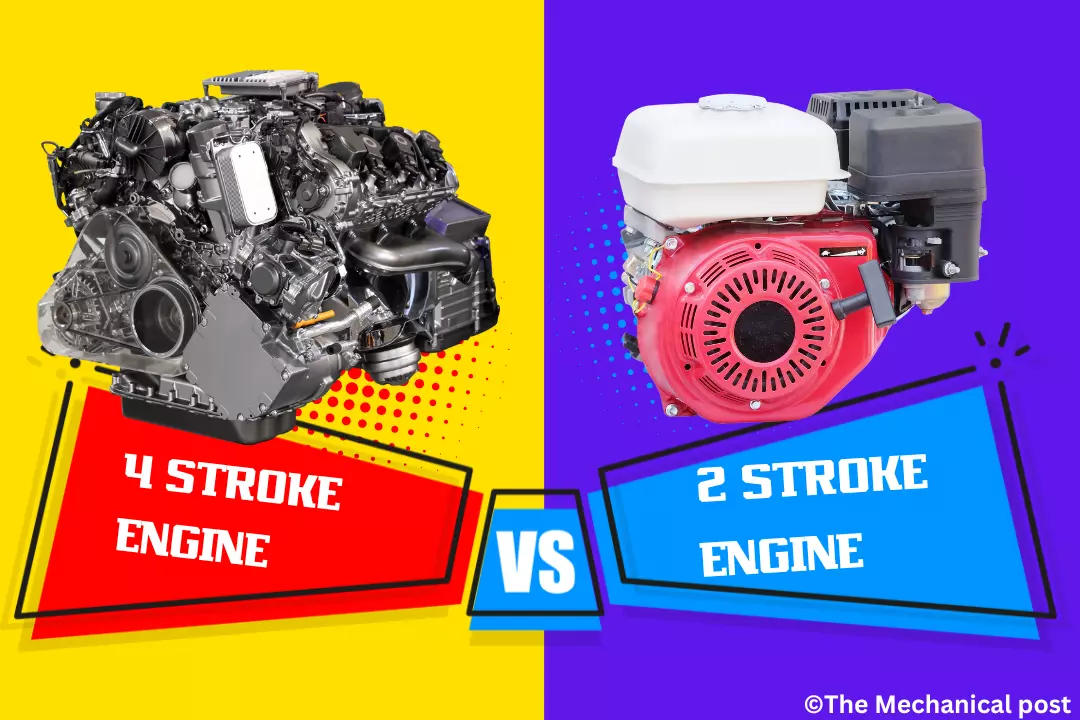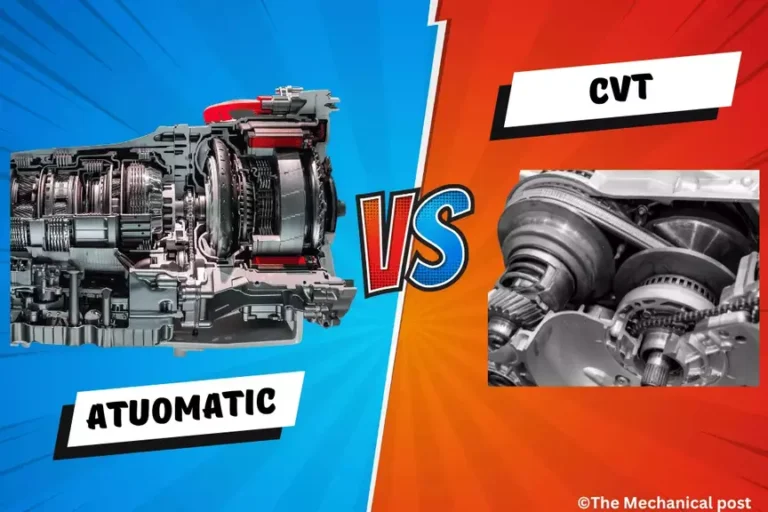Difference between 2 stroke and 4 stroke engine | 2 stroke vs 4 stroke engine with PDF
Internal combustion engines come in a variety of designs, but two of the most common types are 2 stroke and 4 stroke engine. These two engine configurations have significantly different operating cycles and mechanical designs.
Two stroke engines are known for their simplicity and high power-to-weight ratio, while four stroke engines feature better fuel efficiency and emissions.
In this blog post, we will compare the differences between 2 stroke and 4 stroke engine along with operating principles, pros and cons, and applications.
Whether you’re curious about small engine design or looking to purchase outdoor power equipment, understanding the tradeoffs between these two engine types is important.

We will explain in detail how the intake, compression, combustion, and exhaust processes differ between 2 stroke and 4 stroke operation. By the end, you’ll have a solid understanding of the strengths and weaknesses of these fundamental engine configurations.
Also at the end of the article get the Free PDF on difference between 2 stroke and 4 stroke engine.
What is a 2 stroke engine?
A 2 stroke engine completes its power cycle in 2 piston strokes – one for intake and compression, the second for combustion and exhaust. It has ports instead of valves and mixes fuel with oil. 2 stroke engines are simple and lightweight but less efficient than 4 strokes.
What is a 4 stroke engine?
A 4 stroke engine completes its power cycle in 4 piston strokes – intake, compression, combustion, and exhaust. It has poppet valves and separate oil supply. 4 stroke engines are more complex but produce better emissions and fuel economy than 2 strokes.
Difference between 2 stoke and 4 stroke engine:
| Point | 2 Stroke Engine | 4 Stroke Engine |
|---|---|---|
| 1 | Intake and exhaust happen simultaneously, in 2 strokes | Intake and exhaust happen separately, in 4 strokes |
| 2 | No valves | Poppet valves are used |
| 3 | Has ports instead of valves on the cylinder wall | Valves located in cylinder head |
| 4 | Less parts so simpler design | More parts so more complex design |
| 5 | Lighter weight | Heavier than 2 stroke |
| 6 | Produces power in each revolution of crankshaft | Produces power in every 2 revolutions of crankshaft |
| 7 | Less fuel efficient, incomplete combustion | More fuel efficient, complete combustion |
| 8 | Oil is mixed with fuel for lubrication | Separate oil reservoir for lubrication |
| 9 | No oil filter required | Requires oil filter |
| 10 | Examples – chainsaws, mopeds, dirt bikes | Examples – cars, trucks, generators |
| 11 | Higher exhaust emissions | Lower exhaust emissions |
| 12 | Shorter service life | Longer service life |
| 13 | Noisy operation | Quieter operation |
| 14 | Requires pre-mixing of oil and fuel | No pre-mixing needed |
| 15 | Produces more power for a given engine size | Produces less power for a given engine size |
You might also want to know about the Difference between a SI engine and CI engine.
FAQ’s
Which has higher exhaust emissions, 2 stroke or 4 stroke engines?
2 stroke engines emit higher levels of exhaust like unburnt hydrocarbons. This is due to shorter combustion cycles and the mixing of oil into the fuel.
.
Are 2 stroke engines always lighter than 4 strokes?
In general, 2 stroke engines are lighter for a given power output. However, some modern 4 stroke engines can be lightweight and compact through use of materials like aluminum alloys.
.
What are the most common applications of 2 stroke engines?
Chainsaws, dirt bikes, jet skis, snowmobiles, outboard motors, mopeds, and some motorcycles often use 2 stroke engines. They are common in smaller engine sizes
.
Are 4 stroke engines always more fuel efficient?
Modern fuel injected 2 stroke engines can approach the efficiency of 4 strokes. But in general, 4 stroke combustion cycles are more complete and waste less fuel.
.
What is the main driver behind continued use of 2 stroke engines?
2 stroke engines produce greater power from a smaller, lighter package. This makes them attractive for small engine applications where power-to-weight ratio is critical
.
Conclusion
Two stroke and four stroke engines each have their own pros and cons. Two strokes are simpler and more compact, but less efficient than four strokes. Four stroke engines have better emissions and fuel economy, at the cost of added complexity.
For applications like motorcycles and chainsaws, the power-to-weight ratio and mechanical simplicity of two strokes makes them the preferred choice. Four stroke engines dominate applications like cars and generators where efficiency and smooth power delivery are more important factors.
As technology progresses, the lines between two stroke and four stroke engines will continue to blur. But the core principles of these two engine cycles will remain useful knowledge for engineers and automobile enthusiasts alike. When choosing your next engine, consider whether two stroke or four stroke better aligns with your priorities.
You might also like to read:
1. Types of Car Engines
2. What if you fill Diesel in a petrol car?
3. What is a Supercharger and How does it work?
4. Clutch in Car, how does it work?


![Types of Car Sensors: Functions, Working, Location [with PDF]](https://mechanicalpost.site/wp-content/uploads/2021/10/Different-types-of-Car-Sensors.png)

![Disc vs drum brakes: What is the difference? [with PDF]](https://mechanicalpost.site/wp-content/uploads/2021/09/Disc-brakes-vs-drum-brakes.png)

I agree with a lot of the points you made in this article.I appreciate the work you have put into this and hope you continue writing on this subject.